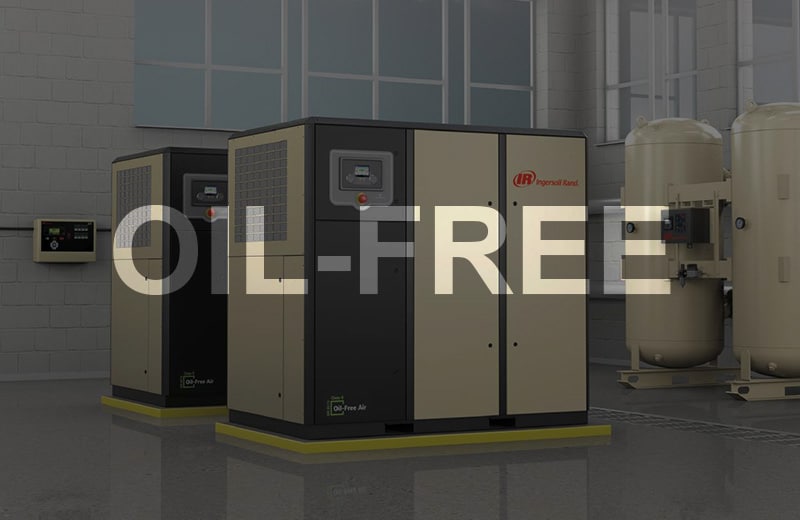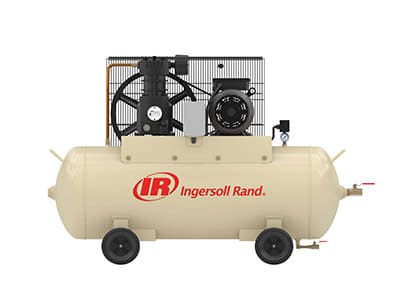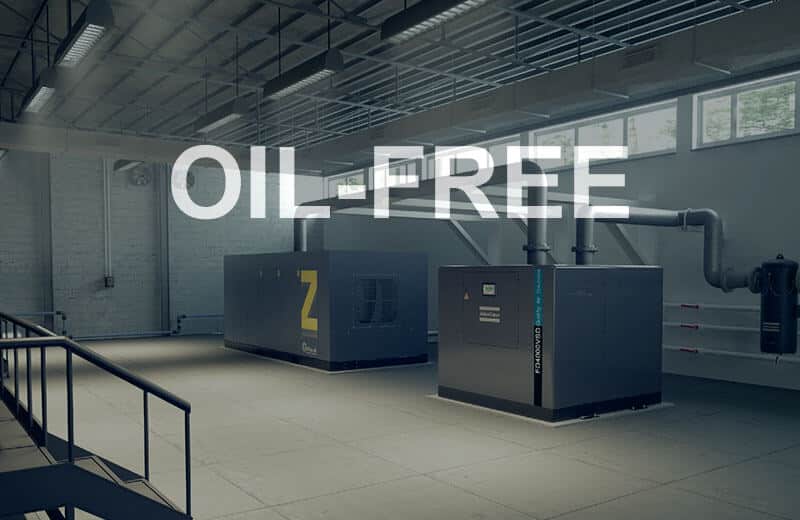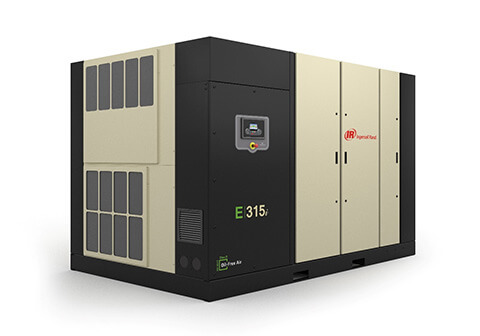
Definition of Oil-Free Air Compressors
Small oil-free air compressors are compact air compressors that do not require oil lubrication for their operation. They are designed to be portable and easily movable. They are commonly used for various DIY and light industrial applications where a small amount of compressed air is required. Small oil-free air compressors typically have a maximum pressure of 150 PSI or less, and a capacity of up to 6 gallons. They are often used for powering pneumatic tools, inflating tires, and operating small paint sprayers or airbrushes.
Types of Oil-Free Air Compressors
There are several types of small oil-free air compressors available on the market, each with its unique features and advantages. Some common types of small oil-free air compressors include:
1. Reciprocating compressors: These compressors use a piston to compress air and deliver it to a storage tank. They are generally less expensive than other types of compressors and are suitable for light-duty applications.
2. Rotary screw compressors: These compressors use two rotating screws to compress air. They are more expensive than reciprocating compressors, but are more efficient and produce less noise.
3. Scroll compressors: These compressors use two interlocking scrolls to compress air. They are known for their high efficiency and low noise levels but are typically more expensive than other types of compressors.
4. Diaphragm compressors: These compressors use a flexible diaphragm to compress air. They are commonly used for medical and laboratory applications, where oil-free and contamination-free air is required.
5. Centrifugal compressors: These compressors use a rotating impeller to compress air. They are commonly used in larger industrial applications where high volumes of compressed air are required.
Components of Oil-Free Air Compressor
Electric motor: The electric motor is the power source that drives the compressor pump to compress the air.
Compressor pump: The compressor pump is the heart of the air compressor. It compresses the incoming air and delivers it to the storage tank or directly to the tool or application used.
Air tank: The air tank stores the compressed air and provides a reserve of air for use when the demand for compressed air exceeds the capacity of the compressor pump.
Pressure switch: The pressure switch controls the on/off operation of the compressor motor based on the pressure in the air tank. It turns the motor on when the pressure in the tank drops below a set level and turns it off when the pressure reaches a certain level.
Check valve: The check valve prevents compressed air in the tank from flowing back into the compressor pump when the motor is turned off.
Safety valve: The safety valve is a pressure relief valve that opens automatically if the pressure in the tank exceeds a safe level.

Air filter: The air filter cleans the incoming air by removing dust, dirt, and other contaminants that can damage the compressor pump.
Regulator: The regulator controls the pressure of the compressed air that is delivered to the tool or application being used.
Caster wheel: Many small air compressors are equipped with industrial casters to facilitate the transfer and transportation of the air compressor.
Drain valve: The drain valve allows the user to release any moisture or condensation that may have accumulated in the air tank.
Applications of Oil-Free Air Compressors
Food and Beverage Industry: The food and beverage industry often requires compressed air for packaging, filling, and bottling. Oil-free air compressors are used to ensure that the compressed air does not contaminate the products.
Medical Industry: The medical industry uses compressed air for respiratory equipment, surgical tools, and other medical devices. Oil-free air compressors are preferred in medical applications to ensure the compressed air is free from oil, which can be harmful to patients.
Electronics Industry: The electronics industry uses compressed air for cleaning and cooling electronics during production. Oil-free air compressors are used to prevent oil contamination, which can damage delicate electronic components.

Laboratories: Laboratories often require compressed air for scientific research, testing, and experimentation. Oil-free air compressors are used to ensure the compressed air is clean and does not affect the accuracy of the results.
Automotive Industry: The automotive industry uses compressed air for painting, sanding, and powering pneumatic tools. Oil-free air compressors are used to prevent oil contamination, which can affect the quality of the paint job.
Textile Industry: The textile industry uses compressed air for spinning, weaving, and dyeing. Oil-free air compressors are used to ensure the compressed air does not contaminate the textile products.
Construction Industry: The construction industry uses compressed air for powering pneumatic tools such as jackhammers, drills, and nail guns. Oil-free air compressors are used to prevent oil contamination, which can cause damage to the tools and affect the quality of the work.
Choosing the Right Oil-Free Air Compressor
When selecting an oil-free air compressor, it is important to consider the appropriate size and capacity for the intended application. Here are some key considerations:
Air pressure requirements: The air pressure required for the application will determine the size and capacity of the compressor needed. Higher pressure requirements will require a compressor with a larger motor and tank size.
Airflow requirements: The air flow or volume of compressed air required for the application will also determine the size and capacity of the compressor needed. Higher airflow requirements will require a compressor with a larger motor and tank size.
Portability: If the compressor needs to be moved frequently, a smaller and more lightweight compressor may be preferred. However, smaller compressors typically have lower capacity and may not be suitable for high-demand applications.
Power source: Consider the availability of a power source for the compressor. If it is used in areas without electricity, a gasoline-powered compressor may be more appropriate.
Noise level: Some compressors can be quite loud, so consider the noise level of the compressor and whether it will be used in a location where noise is a concern.
Duty cycle: The duty cycle, or the amount of time the compressor can run continuously without overheating, is also an important consideration. Some compressors are designed for intermittent use, while others can run continuously for longer periods.
Overall, selecting the appropriate size and capacity of a small oil-free air compressor requires careful consideration of the specific requirements of the intended application. A compressor that is too small or too large may not be effective for the job, so it is important to carefully evaluate the needs of the application before making a purchase.
Oil-Free Compressor Maintenance and Care
Maintaining and caring for an oil-free air compressor is crucial for ensuring its longevity and optimal performance. Here are some maintenance and care tips for oil-free compressors:
Regular cleaning: Regularly clean the compressor to remove any dust or debris that may accumulate on the exterior. This can be done with a soft brush or cloth.
Check air filters: Check the air filters regularly and replace them as needed. Clogged filters can reduce the efficiency of the compressor and cause damage to the motor.
Drain moisture: Drain any moisture that accumulates in the compressor tank to prevent corrosion and damage to the tank. Moisture can be drained by opening the tank valve and allowing it to flow out.

Inspect hoses and connections: Inspect the hoses and connections regularly for any signs of wear or damage. Replace any damaged hoses or connections immediately.
Check oil level: If the compressor has a motor, check the oil level regularly and top off as needed. Follow the manufacturer’s recommendations for oil type and change intervals.
Lubrication: If the compressor has moving parts, lubricate them as needed with the manufacturer-recommended lubricant.
Store properly: When not in use, store the compressor in a dry, clean location away from direct sunlight and extreme temperatures.
Follow manufacturer guidelines: Follow the manufacturer’s guidelines for maintenance and care, including recommended service intervals and procedures.
By following these maintenance and care tips, you can ensure that your oil-free air compressor operates at its best and lasts for many years. Regular maintenance and care can also prevent costly repairs and replacements.
Conclusion
Recap:
Oil-free air compressors are 100% oil-free, making them ideal for industrial use.
They are oil-free, which means they don’t require oil for lubrication, making them low-maintenance and easy to use.
They are suitable for various applications, including inflating tires, powering air tools, and painting.
Importance of selecting the right compressor and maintaining it properly:
Selecting the appropriate size and capacity of the compressor is crucial for ensuring optimal performance and preventing damage to the compressor.
Regular maintenance and care, such as cleaning, checking air filters, draining moisture, inspecting hoses and connections, and checking oil levels, can help prolong the life of the compressor and prevent costly repairs or replacements.
Following the manufacturer’s guidelines for maintenance and care is important to ensure the compressor operates at its best and lasts for many years.






